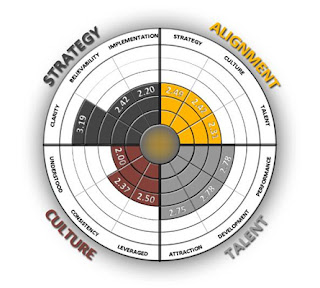
The telephone game can kill your business.
This fun childhood game is where one child whispers a message to another, who then whispers to a third and so on around the circle until the last player tells the final version to the entire group. The process illustrates how quickly a simple and short message can completely change as it is shared even within a small group.
According to a study at Northwestern published in the Journal of Neuroscience, your brain remembers events slightly differently every time you recall a previous memory. Imagine how the remembered versions would vary with a large group of people. Then think about what can happen through social media. If you are concerned about brands and messaging, it is imperative that you take these factors into account so you can leverage positive customer experiences and minimize negative stories.
While it may be tempting to dodge unhappy customers, neglecting them will only exacerbate the situation. A recent Retail Customer Dissatisfaction Study showed that up to 31% of dissatisfied customers tell others about their experience with 6% of those telling as many as six or more people. Not the word of mouth that you want to build your brand or your business.
With less than 10% of customers voicing their concerns when their expectations are not met, you should take full advantage of the actionable feedback that you receive by:
- Reaching out to unhappy customers to truly understand their frustrations
- Empathizing with their situation
- Trying to make it right from their perspective
Read more about turning unhappy customers into promoters...
About LSA Global
Founded in 1995, LSA Global is a leading performance consulting and training firm that helps high growth technology, services, and life-science companies create a competitive advantage by powerfully aligning their culture and talent with their strategy. Learn more about getting aligned
Does speed kill customer service?
Too many customer service and contact centers still weigh the number and speed of calls to measure day-to-day rep performance. That is a mistake. No customer wants to feel like a number in the lineup of callers.
While it is true that customers want their issues resolved quickly, they also want to be served in a way that feels fair, reasonable and respectful. When you analyze customer satisfaction data, it pays to slow down the service experience to ensure that all clients feel as though:
- They have your full attention
- You understand their unique situation
- You genuinely want to resolve their issue
Financially, the better the service experience, the more likely you are to retain that client and have them tell a friend to take advantage of what you have to offer.
L.L. Bean learned to slow down the customer experience long ago. Every customer service call is answered by a live person. Their reps have been trained to allocate the time required to build rapport, understand the problem and solve the issue. They are not rewarded for rushing through calls. They are measured by the problems they solve and the quality of the interaction from the buyer's perspective.
The objective of customer service should be to generate good will (as measured by repeat and referred business) and leave the customer feeling that they were well treated.
The bottom line: If you want to improve customer acquisition, loyalty, growth, and satisfaction, try slowing down your customer service interactions.
Read more about customer service excellence...
About LSA Global
Founded in 1995, LSA Global is a leading performance consulting and training firm that helps high growth technology, services, and life-science companies create a competitive advantage by powerfully aligning their culture and talent with their strategy. Learn more about getting aligned

Virtual project teams contain additional (and often hidden) risks.
Creating a high performing team is challenging enough when all team members are on the same site. When the team operates virtually (and often only for the duration of a project), the challenges are multiplied. Getting virtual project team members to work in harmony is no easy task.
Despite detailed project plans and frequent status meetings, some virtual teams just do not work well together. Most of us have experienced the fallout - bickering, unproductive meetings and disengagement as the project falls behind and begins to miss the mark.
It is no secret that the science of project management alone cannot create successful projects without committed, motivated and collaborative team members. A weak, uncooperative team isn't just unproductive; it can result in resentment, disruptive politics and active disengagement.
A positive environment promotes trust and respect among team members and increases performance through productive habits. Often the key is a project leader who ties the team together and embodies the necessary project leadership skills and attributes that help the team succeed.
Read more about the 5 tips for virtual teams that will keep you on track...
About LSA Global
Founded in 1995, LSA Global is a leading performance consulting and training firm that helps high growth technology, services, and life-science companies create a competitive advantage by powerfully aligning their culture and talent with their strategy. Learn more about getting aligned

Important projects fail to meet internal and external stakeholder expectations at an alarming rate - up to 75% by some accounts.
There are many well-known culprits. Project failure typically starts with poor project definition and a kick-off process that overlooks the importance of setting the right business case, stakeholder clarity or team environment for success. The lack of planning upfront runs into inadequate stakeholder expectation management and then dovetails into planning and forecasting problems due to insufficient consideration of the complexity and nuances of the task at hand.
In a domino effect, this weak foundation sets the stage for negative project team dynamics as you try to balance the typical project pressures of trade-offs between cost, schedule, scope and quality when you lack the necessary information or support.
Team discontent then typically arises in the areas of problem solving, decision making, conflict resolution, continuous improvement, reward systems, meetings, accountability, trust, communication, change management, and performance measurement.
Successful project managers know that conducting reviews before, during and after a project pays big dividends. For example, one recent high-tech client was able to identify a missing stakeholder and add two critical resources after a project "pre-mortem" identified previously undetected customer risks. Another life-sciences client used "live-mortems" at key project gates to improve team engagement by 26% and progress on two previously dependent areas to deliver ahead of schedule. Finally in a classic post-mortem, a recent professional services client identified 7 key improvement areas for future projects critical to retaining their top technical talent despite stiff competition for those employees.
The bottom line with complex and integrated projects - "go slow to go fast" when it comes to setting the foundation and "go fast to go faster" when it comes to learning, prototyping and innovating.
Read more about using proven project post-mortems before, during and after projects...
About LSA Global
Founded in 1995, LSA Global is a leading performance consulting and training firm that helps high growth technology, services, and life-science companies create a competitive advantage by powerfully aligning their culture and talent with their strategy. Learn more about getting aligned

How we think about change management must fundamentally change.
Over the past twenty-five years we have designed, implemented and facilitated hundreds of change efforts from the inside as thought leaders, consultants and trainers. The most important learning from our collective experience is this: How we think about change management must fundamentally change.
New Context
Organizational change should be viewed within the emergent 21st century context: the global economy, technological and mobile innovations, resource constraints, uncertainty, and the boundary-challenging business environment within which we operate.
In addition to these "physical" factors we must consider the current psychological factors: multi-generational workforce, change savvy (and change weary) employees, and the interconnectedness and multiculturalism that characterize our organizations. Our business environments, more than ever before, are dynamic, complex and constantly facing change.
If change is so ubiquitous, why does it need to be managed?
Today, leaders must create organizations that quickly evaluate, decide and embrace the daily, weekly and quarterly changes present in our environments. That said, what about bigger, planned, transformative change?
The 21st century question regarding organization-wide change is not: How do we change? Rather the question is: Why are we changing? If this question is fully vetted, the answer should ultimately point to two critical areas and a new approach to change.
Read more about the new approach to successful and lasting change...
About LSA Global
Founded in 1995, LSA Global is a leading performance consulting and training firm that helps high growth technology, services, and life-science companies create a competitive advantage by powerfully aligning their culture and talent with their strategy. Learn more about getting aligned
Increased breadth, complexity, and the speed of change provide a unique challenge to leaders who are continually being asked to do more with less.
Not surprisingly, most change initiatives fail to meet original expectations - up to 70% by some accounts.
Even though change is typically used to improve the current situation, maintaining the status quo is far easier than making an organizational change. Change is work. To succeed, leaders must balance a laser-like focus and an unwavering commitment with great flexibility and intelligent adaptation as they navigate change.
Effective leaders understand and practice how to field resistance to change, analyze the current state of change acceptance in their teams (awareness, understanding, acceptance, commitment) and thoughtfully plan responses to better help move teams through change.
Our clients typically use change management to:
- Help an under performing leader or team
- Improve cooperation and results across business units and functions.
- Align their unique organizational culture with specific strategic goals.
- Integrate multiple change initiatives.
- Increase stakeholder and employee commitment, engagement and motivation.
- Improve leadership and change agent readiness and workforce resilience.
Read more about proven and practical approaches to organizational change...
About LSA Global
Founded in 1995, LSA Global is a leading performance consulting and training firm that helps high growth technology, services, and life-science companies create a competitive advantage by powerfully aligning their culture and talent with their strategy. Learn more about getting aligned

Is it possible that what you learned about coaching is wrong?
For much of the sales world, the notion that sales coaching is an essential ingredient in improving sales organizations is not up for debate. But while the debate about the necessity of sales coaching may be over, most sales leaders - if they're honest - will tell you that they barely have time to manage their sales teams - and they just don't have time to coach.
With that reality as the backdrop, we want to pose this question - What if you could cut your coaching time in half and get better results?
In our decades years of working with leading sales executives and front line managers, we have identified what we consider to be the top two mistakes that hinder effective sales coaching - mistakes that if avoided, will greatly simplify the sales coaching process and minimize the time it takes to effectively develop your reps.
Read more about the top 2 sales coaching mistakes and what to do about it...
About LSA Global
Founded in 1995, LSA Global is a leading performance consulting and training firm that helps high growth technology, services, and life-science companies create a competitive advantage by powerfully aligning their culture and talent with their strategy. Learn more about getting aligned
There is substantial evidence that sales professionals who receive consistent sales coaching from managers and mentors achieve significantly higher levels of performance than those who receive little or no sales coaching.
Effective sales coaches provide perspective and feedback that result in higher sales performance. Our research shows that it makes a 4-to-1 difference in terms of revenue production.
Our clients typically use sales performance coaching when:
- "B" and "C" players are holding back sales goals.
- Sales leaders need help to more effectively motivate and equip their team.
- A lack of sales accountability is dragging down the sales culture and results.
- Only "lagging indicators" of performance rule the day.
Read more about providing sales managers and leaders with the core sales coaching methodologies, skills and tools necessary to succeed...
About LSA Global
Founded in 1995, LSA Global is a leading performance consulting and training firm that helps high growth technology, services, and life-science companies create a competitive advantage by powerfully aligning their culture and talent with their strategy. Learn more about getting aligned

A recent study by Accenture found that 31% of employees do not like their boss. Manpower Group research shows that 44% of workers are unsatisfied. The list goes on and on.
It is now common knowledge at most companies that if employees feel as though they are not learning anything new or that their career is at a standstill, they are likely to get that proverbial itch to leave and look for greener pastures.
Some employees feel that, because of the lackluster economy and perceived high unemployment rate, their company doesn't much care about their career. Others do not see a clear path for advancement. Still others, even if they are dissatisfied, feel that there are no good job opportunities anyway so why bother looking? Whatever the feelings, as employee engagement and retention experts for decades, we are here to tell you that most employers DO CARE....in fact, they care very much.
Since the mid-1990s, the focus on retaining competent and talented employees has been increasingly on the radar screen for most executives. In addition, they are increasingly aware of the high cost of turnover. Executives know that if you leave, they will pay more than your current cost to replace you. Even more important, they will lose valuable time in meeting company and customer goals.
While unemployment overall is still historically high, for those with bachelor's and advanced degrees, U.S. unemployment is still significantly below 5% (Bureau of Labor Statistics). Employers know that replacing a skilled worker, especially in fields such as technology and health care, is not as easy as it seems when reading the daily headlines. So if you or your direct reports are dissatisfied and wishing for a change, consider the following.
Read more about the 3 steps to better navigating your own career...
About LSA Global
Founded in 1995, LSA Global is a leading performance consulting and training firm that helps high growth technology, services, and life-science companies create a competitive advantage by powerfully aligning their culture and talent with their strategy. Learn more about getting aligned

Effectively developing talent (especially millennials) in a way that fits your culture and business strategy can be a challenge.
Done right, the benefits of effectively developing the careers of the top current and future talent within your organization can be massive:
- Decreased attrition
- Lower recruiting and employee relations costs
- Higher levels of productivity and discretionary effort
- Improved employment branding
The advantages to employees are just as powerful including higher levels of engagement, commitment, motivation, pride, and development. Successful companies take a three-pronged approach to career development that is aligned with their culture and business and talent strategies.
Developing Top Talent provides managers with a practical blueprint of their roles and responsibilities in developing the careers of their direct reports. It uses a proven four-step career development model and provides a career development toolkit to support employee assessments and career path planning.
Navigating Your Career gives individual contributors a proven process and critical tools for "owning" their own career development and having effective career conversations with managers and peers.
Career Development Coaching Certification prepares people to become an internal career development coach by providing the process and tools for working one-on-one with employees to help them clarify their natural talents and strengths and to facilitate their discovery of which roles might be the best fit for maximum personal and company productivity.
About LSA Global
Founded in 1995, LSA Global is a leading performance consulting and training firm that helps high growth technology, services, and life-science companies create a competitive advantage by powerfully aligning their culture and talent with their strategy. Learn more about getting aligned

Once your business direction is clear and compelling, it is your job as a leader to understand, shape, and align your corporate culture to drive key strategic initiatives.
As senior executives will attest, this is no easy task. While most agree that a sound strategic plan is imperative, few agree on what to do next. In fact, research shows that less than ten percent of even the well crafted strategies are effectively executed.
For most fast growing and evolving companies, we know that the biggest obstacles to success have little to do with designing a winning strategy. When you look under the hood of many organizations (even ones that have a solid strategic plan), you find that they are not firing on all cylinders.
They are not performing at their peak. And their leaders have not created the high performance environment necessary to get sustainable results now or in the future.
A recent Harvard Business School research report described how an effective culture can account for up to half of the differential in performance between organizations in the same business. This should be a powerful motivator for all leaders.
Read more about how to create a high performance culture for your strategy
About LSA Global
Founded in 1995, LSA Global is a leading performance consulting and training firm that helps high growth technology, services, and life-science companies create a competitive advantage by powerfully aligning their culture and talent with their strategy. Learn more about getting aligned

You have a solid strategy. A promising future. Now, how do you get where you want to go?
If you believe that you are headed in the right direction, but your current performance is not where you want it to be, think alignment.
Organizational alignment means configuring the key elements of your company to optimize performance. Based upon over twenty years of research, we believe that when your strategy, culture and talent are misaligned, your organization is at best under-performing and at worst set up for major problems.
Do not get fooled into making isolated strategy, culture or talent moves that do not lead your company dramatically forward. Neither talent, nor culture, nor strategy alone will produce the results you want. Alignment is the missing ingredient.
Learn more about:
Educating Senior Leaders
about the importance of organizational alignment and change
Assessing Current Alignment
of cultural and talent with strategy
Implementing Your Key Moves
defined for immediate impact on performance and organizational health
About LSA Global
Founded in 1995, LSA Global is a leading performance consulting and training firm that helps high growth technology, services, and life-science companies create a competitive advantage by powerfully aligning their culture and talent with their strategy. Learn more about getting aligned

Just 5%.
A 5% increase in customer loyalty can boost profits by as much as 25% to 85%.
It is up to the Contact Center Leadership Team to stimulate improved performance and execution so these gains become a reality. The leaders need to create the circumstances that elicit better performance from their people.
The good news is that positive customer experiences drive repeat business, cross-selling and up-selling of services, loyal customers, and referrals. Positive experiences decrease the overall costs of service and sales.
The bad news is that contact center technology has not been the great equalizer between people and their performance that had been hoped. While technology has helped to mitigate poor performance and standardize overall performance, it hasn't fully resolved high attrition rates, lack of engagement, and embarrassing service and sales failures.
These problems and a variety of other ills continue to plague contact centers and result in lost revenue, high service costs, and low customer loyalty. So the key question for Contact Center Leaders and their bosses is not "why" high performance but rather "how?"
Fortunately, with the help of 16 years of research and the biggest bank of high performance environment data in the world, the "how" has become a whole lot easier.
Read more about the 9 components to creating a high performance environment
About LSA Global
Founded in 1995, LSA Global is a leading performance consulting and training firm that helps high growth technology, services, and life-science companies create a competitive advantage by powerfully aligning their culture and talent with their strategy. Learn more about getting aligned
Are you walking the talk with your customers? And does it really matter?
If a company does not follow through on its brand promise, or if the brand promise is at conflict with the company's positioning, its reputation and sales will likely falter. The experience your employees create with each and every customer is greatly influenced long before the customer interaction even begins.
It's determined by how effective your customer service strategy, and your brand promise, is designed and executed.
For a customer service organization to thrive, the leader must align its culture and talent not only with the customer service strategy, but also with the overall company business strategy.
- A clear strategy provides the necessary direction and clarity.
- A high performance culture provides the environment for your employees to thrive.
- The right talent in the right place makes it happen over time.
Understanding the overall business strategy is the first step. Defining your customer service strategy and aligning it to the overall business strategy is the next step. Combined, they should establish a clear and meaningful brand promise that helps to create and retain loyal customers.
Read more about the key steps required to establish your brand promise...
About LSA Global
Founded in 1995, LSA Global is a leading performance consulting and training firm that helps high growth technology, services, and life-science companies create a competitive advantage by powerfully aligning their culture and talent with their strategy. Learn more about getting aligned
 Not all missed deadlines are created equal. Missed project milestones should be treated differently based upon the circumstances and the performance culture that you want to create.
Not all missed deadlines are created equal. Missed project milestones should be treated differently based upon the circumstances and the performance culture that you want to create.
What happens in your organization if you miss a deadline on a project?
If people perceive "nothing," there is performance trouble ahead.
If there are no consequences to missed deadlines, project team members can feel that their project was not so important after all or that the timing did not really matter. This slippery performance slope can lead to a lack of motivation and more slippage on other important dates and key deliverables.
It is up to you as the project manager to keep project team members on target and on time without sacrificing quality or project team satisfaction. As uncomfortable as it may be to raise the issue of failed delivery in some circumstances, it will be even more difficult to explain to the project sponsor and key stakeholders why your project is lagging and why your team is under-performing.
If you or your organization let dates slip, there are three key steps to take as a leader to get things back on track.
Read more about the 3 key steps to take
About LSA Global
Founded in 1995, LSA Global is a leading performance consulting and training firm that helps high growth technology, services, and life-science companies create a competitive advantage by powerfully aligning their culture and talent with their strategy. Learn more about getting aligned
 We have all led or been affected by critical and complex projects that have gone "sideways." The experience is rarely enjoyable and often difficult to forget.
We have all led or been affected by critical and complex projects that have gone "sideways." The experience is rarely enjoyable and often difficult to forget.
The bad news. Unfortunately, most research shows that up to three-quarters of internal and external projects fail to meet original expectations. In three recent client meetings, a combined $25,000,000 of problems were directly associated with missing targets and poorly managing client and project stakeholder expectations. The good news. The vast majority of the problems could (and should) have been avoided along the way.
Our experience tells us that spending a little bit of time to take stock throughout the project and at the end of a project can pay big dividends, greatly improve project team engagement, and significantly increase internal and external stakeholder satisfaction.
An effective Project Post Mortem Process should be based upon multi-industry project management best practices and research. The results should provide targeted recommendations for success during and after critical project phases by helping project leaders and teams to:
- Clearly agree upon the current project situation and status.
- Come to closure as individuals and as a project team.
- Apply project best practices to determine key takeaways and areas of improvement.
- Identify and manage project risks.
- Re-calibrate, determine areas of focus, and identify specific next steps.
- Implement proven solutions that will work for your unique project, stakeholders, culture, and situation.
Whether project team-specific or part of a 360-degree project stakeholder view, we recommend including three key project success areas and 27 key performance indicators.
Read more about the 27 key project performance indicators...
About LSA Global
Founded in 1995, LSA Global is a leading performance consulting and training firm that helps high growth technology, services, and life-science companies create a competitive advantage by powerfully aligning their culture and talent with their strategy. Learn more about getting aligned
 What makes a person an outstanding talent leader? Is it the ability to set a vision, develop a strategy, or manage a budget? Or is it something much less visible and more subtle?
What makes a person an outstanding talent leader? Is it the ability to set a vision, develop a strategy, or manage a budget? Or is it something much less visible and more subtle?
In our experience, leadership is not something that we are born with. While some people certainly have a general aptitude toward specific leadership traits, the vast majority learn to effectively lead others through hard work and experience.
After all, it is not easy to get people to follow you - especially through difficult changes in complex times. It is also unsettling to many new leaders when they finally realize that their success is dependent upon those around them and not their individual smarts or heroics.
It takes insight into what leadership is all about and the desire to practice it in a deliberate, thoughtful, and consistent way to become an effective leader.
Based on over 20 years of experience, we have identified 8 Key Traits that successful talent leaders share time and time again.
Read more about the 8 key traits of successful talent leaders
About LSA Global
Founded in 1995, LSA Global is a leading performance consulting and training firm that helps high growth technology, services, and life-science companies create a competitive advantage by powerfully aligning their culture and talent with their strategy. Learn more about getting aligned
 If you are like most of our fast growing clients with big ambitions, chances are that your staffing and recruiting processes are not where they should or could be to support your growth goals. Even with historically high unemployment rates, the majority of our clients are struggling to find and hire the top talent that they need to execute their strategies in a way that makes sense.
If you are like most of our fast growing clients with big ambitions, chances are that your staffing and recruiting processes are not where they should or could be to support your growth goals. Even with historically high unemployment rates, the majority of our clients are struggling to find and hire the top talent that they need to execute their strategies in a way that makes sense.
To hit ever increasing and shifting (and often ambiguous) hiring targets, talent leaders need create approaches that are strategically aligned, nimble, scale-able, and fast. From sourcing quality candidates, to hitting hiring forecasts, to employee and internal branding, an effective staffing and recruiting process is a complex challenge.
Best-in-class organizations execute each strategic staffing and recruiting phase efficiently and in alignment with their business and people strategies. Low performing functions are reactive and tactical and often at odds with hiring manager priorities.
Employee and Recruitment Branding
Employee and Recruitment branding is an essential (and often overlooked) element of an effective recruiting function. Your employee brand is your corporate calling card. It impacts your recruiting, engagement, and retention of current, potential, and future employees. If you do not start strategically, you will most likely find yourself under the gun and chasing a moving target.
Learn more recruitment branding...
Candidate Assessment
Advanced technology, social media, and a shifting economy have increased the flood of resumes (both qualified and unqualified) that bombard applicant tracking systems. Today's recruiting websites often lack proficient applicant screening tools and make it easier than ever to apply for a position. Assuming that your strategy and criteria are clear, the right applicant screening software can act as a first-level filter to eliminate potential candidates who fall short of the basic requirements for your positions so that your recruiters and hiring managers can focus on talent that fits your business and your culture.
Learn more about candidate assessment...
Workforce Planning Process
Workforce planning is the process of deciding how many people you will need in a particular area over a certain period of time. And conversely, it's also taking a hard look at the talent market and assessing how many people are available and how difficult to will be to hire them so that you can make realistic talent plans to support your business strategy.
Learn more about workforce planning...
College Recruiting
College recruiting can be an important ingredient in your overall workforce plan and recruiting strategy...or not. Depending upon historical data, key recruiting metrics, and your hiring managers , it could also be a colossal waste of resources. Do inexperienced hires make sense for your business model?
Learn more about college recruiting...
About LSA Global
Founded in 1995, LSA Global is a leading performance consulting and training firm that helps high growth technology, services, and life-science companies create a competitive advantage by powerfully aligning their culture and talent with their strategy. Learn more about getting aligned
 The warning signs are everywhere.
The warning signs are everywhere.
The hushed tones when Call Center Reps gather in the break room...The wide-eyed looks when sales promotions are announced...The cries of, "If I wanted to be in sales, I would have interviewed for a sales job!"...The sighs of resignation during sales training workshops...The new resumes online that somehow seem vaguely familiar...
When Call Center Reps hate to sell, we put our customer service AND sales initiatives at risk. Instead of driving revenue up, we may be driving customers away.
When we ask Call Center Leaders, they simply want their reps to:
- Fix the problem that caused the customer to call
- Confirm that the customer is happy
- Sell them more stuff
Why are Call Center Reps so reluctant to go along with such a simple program?
That question has not one answer, but five. Our work with clients over the last two decades has uncovered five specific things you can do to relieve the issues that cause Call Center Reps to hate to sell.
Read more about the 5 warning signs and what to do about them
About LSA Global
Founded in 1995, LSA Global is a leading performance consulting and training firm that helps high growth technology, services, and life-science companies create a competitive advantage by powerfully aligning their culture and talent with their strategy. Learn more about getting aligned
 Cross selling has many benefits.
Cross selling has many benefits.
Top performing cross-selling contact centers increase wallet share, deepen customer relationships, improve customer loyalty, build employee confidence, reduce attrition, and enhance the customer experience.
To build effective cross selling skills ensure that you include these seven elements:
- Metrics: Identify the top 2-3 business metrics that you want to move.
- Gaps: Assess major skill gaps to target investments, set a baseline, and initiate the change process.
- Flexibility: Have the option to train one agent at a time to take advantage of periods of low call volume while minimizing downtime.
- Coaching: Include online and offline coaching to guide reps through competency levels and provide immediate performance feedback.
- Scenarios: Design around critical customer simulations and scenarios for applying skills on-the-job.
- Test: Build a final performance test that confirms mastery of the key skills.
- Impact: Measure skill adoption and business impact.
Read more about building call center cross selling skills
Visit our Customer Service Blog
About LSA Global
Founded in 1995, LSA Global is a leading performance consulting and training firm that helps high growth technology, services, and life-science companies create a competitive advantage by powerfully aligning their culture and talent with their strategy. Learn more about getting aligned
Losing good employees is expensive.
The inside sales and customer service areas at most companies have annual turnover well north of 25%.
While the reasons for this are many, it typically boils down to two things:
- These are tough jobs and one has to have a thick skin to be successful and stay in it for the long term.
- Many companies struggle to create a compelling work environment that fosters performance and longevity.
A key contributor to the success or failure in both of these categories is the new hire's on-boarding experience.
This begins when the employee first sees an ad or talks to a recruiter and continues all the way to being a fully functional team member.
The experience can last anywhere from thirty days to a year depending on the complexity of the job.
Read more about how to effectively on-board new customer service hires...
About LSA Global
Founded in 1995, LSA Global is a leading performance consulting and training firm that helps high growth technology, services, and life-science companies create a competitive advantage by powerfully aligning their culture and talent with their strategy. Learn more about getting aligned

Sales and service reps who receive consistent and targeted performance coaching outperform their peers 4-to-1.
When it comes to keeping your brand promise to increase customer retention and revenue, the performance of your customer-facing people is critical.
Successful organizations ensure that their front-line managers and supervisors have the skills, time, and incentives to mentor and coach associates daily. This approach sends a strong message about your organization's commitment to quality and service both internally and externally.
While targeted and well designed training sessions can definitely start the development process off on the right foot, tangible behavior change occurs on the job when your staff has the opportunity to apply the skills and techniques.
To make your investment pay off, your customer service managers and supervisors must become directly involved in rewarding, modeling and coaching the desired skills and behaviors every day.
Customer Service Coaching Best Practices
Customer Service Mentoring Best Practices
About LSA Global
Founded in 1995, LSA Global is a leading performance consulting and training firm that helps high growth technology, services, and life-science companies create a competitive advantage by powerfully aligning their culture and talent with their strategy. Learn more about getting aligned
























